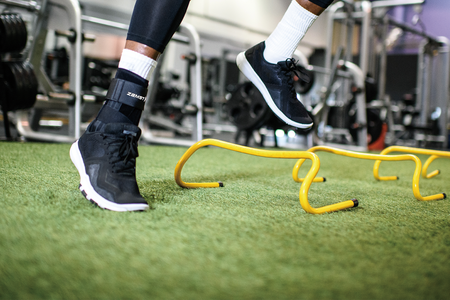What is an ankle sprain?
An ankle sprain is an injury to the outside of the ankle involving the ligaments that stabilize the bones of the foot to the lower leg. The most common type of an ankle sprain is called an ‘inversion’ ankle sprain. This type of injury usually results from contact and/or weakness leading to the ankle rolling inward, placing excessive stress on the outside ligaments of the foot/ankle. These injuries are graded on a scale of Grade I – Grade III, ranging from a mild injury to severe (complete ligament tear). For purposes of this article, the focus will be on mild ankle sprains such as a Grade I or mild Grade II that have not been rehabilitated properly that are now chronic and recurring.
Which sports are most prone to ankle sprains?
Ankle sprains are possible with any dynamic type activity, however among the most heavily studied sports the highest rates of sprain lie among Basketball, Volleyball, Soccer, Lacrosse and lastly Football.
Why do ankle sprains turn into chronic injuries?
The most common reason people suffer from chronic ankle re-injuries stems from an initial injury that wasn’t properly rehabilitated. Once a ligament of the foot or ankle is compromised, the body will naturally try to stabilize the joint using surrounding muscles and faulty foot mechanics. This can lead to chronic re-injury and pain. Each time the ankle is challenged with another “roll” the ligament is re-stressed causing looseness in the joint and the entire injury process starts over.
How to treat a chronic ankle injury?
Initial treatment for any ankle injury should be the R.I.C.E. (rest, ice, compression, elevation) method. This will help the body effectively heal by controlling excessive inflammation during the first 24-48 hours post injury. Although giving an ankle time to heal is important, providing R.I.C.E. alone is typically not enough for high level athletes to immediately return to play.
Physical therapy is highly recommended for a quick and successful return to sport.Treatment sessions should include soft tissue mobilization for scar tissue, proprioceptive exercises for balance training and repetitive strengthening of the small muscles in the foot/ankle for stability. Return to sport exercises are always advised to regain full strength of the ankle and build the confidence back in the athlete.
How to prevent future injury to the ankle?
Sports Performance Training in combination with maintaining solid ankle stability are the best ways to prevent re-injury long term. In addition, some athletes will use a standard ankle taping routine to promote extra stability. Even though this is a heavily researched and a beneficial preventative measure, purchasing of supplies can become cumbersome and costly.
For some athletes using an ankle brace becomes the solution. Unfortunately, some traditional braces can limit movement, which affects performance by reducing power, speed and agility. Recently however, Zamst has re-developed its Filimista ankle brace to provide sufficient support without compromising performance. The Filimista ankle brace can be reused for a full season, cuts down on the costs of taping supplies and has been the chosen ankle brace for many professional athletes dealing with chronic ankle injuries.
By Samantha Sargent, PT, DPT, ATC, TPI
ProSport Physical Therapy
2777 Bristol St, Ste. B, Costa Mesa, CA (949) 250-1112






